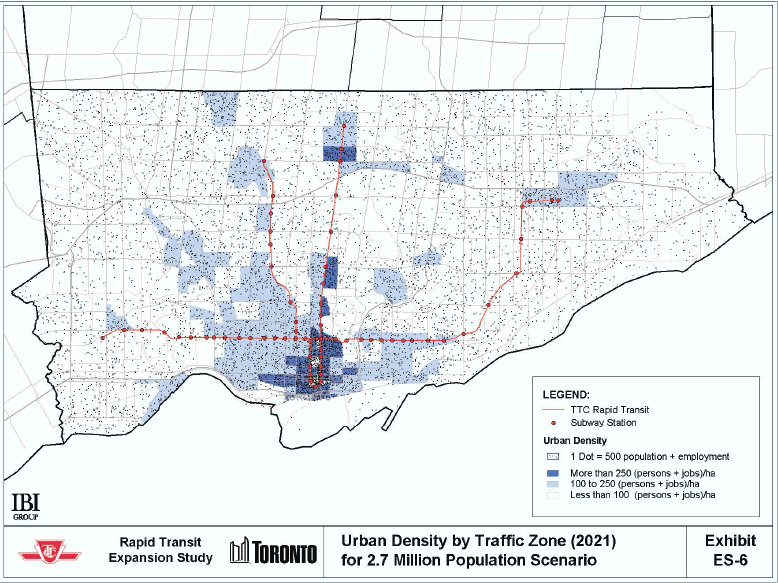C
cacruden
Guest
A Go/DRL transfer point at Cherry Rd would be nice :rollin
Flemingdon Park is, shockingly, a very busy bus route. It would undoubtedly be a very well-used subway station, along with Thorncliffe Park. East York Centre is definitely an area that could use some spark, and a subway would do it. There are far more people along Don Mills than along the Spadina line, so that's a very useful selling point. It would also eliminate the jog on the Lawrence bus route, and dramatically speed trips downtown for people in the east end, since the stops would be significantly less frequent than on the Yonge line.

I think the DRL needs to be pitched to the TTC before it needs to be pitched to politicians. It wasn't even considered in RTES which made no sense to me. Why consider subway extensions to MCC when Mississauga has shown no interest in it but not the DRL.
The downtown area definetly needs a subway route... and international prestige is needed too (higher per-cap ridership than Chicago, yet barely 60%-70% system length?)
Am I wrong?
I think the DRL needs to be pitched to the TTC before it needs to be pitched to politicians. It wasn't even considered in RTES which made no sense to me. Why consider subway extensions to MCC when Mississauga has shown no interest in it but not the DRL.
I am a little baffled by the TTC's view of subways as prestige projects, a view that is unique among the world's transit authorities.
The amount of jobs in Toronto has decrease approx 100K over the last couple of years? Does that warrant billions of dollars of subways within 416?
Hence, a revamped property tax structure, and incentives have to be given to employers who locate in in preferential areas. One benefit could be relief or waiving of employer paid health benefit taxes on payrolls. The list of incentives are long that could be offered to promote better organization within the GTA.
ridership and employment areas in the core gravitate around YUS and Queen St.
The number of jobs downtown and city-wide has increased the last couple years. There were drops in the 90s and after 2001 or so but the job market has been recovering since then. TTC and GO ridership have been rising and so has the number or residents in the core. Even if the numbers weren't going up, the demand has always been there to relieve the overcrowded and slow streetcars downtown.My take on subway development, is that most projects being studied right now are no really needed. Looking at current commutting patterns, there really hasn't been a large increase in demand for downtown commuttes. Which means that has the job market grows, jobs are being concentrated in other areas. If jobs were increasing largely downtown, that would warrent a better cost benefit of building expensive subways that bring people downtown as people are going the same direction.
Given job growth is happening outside of downtown, then wasting billions of dollars on subways in surburban lesser dense areas is a waste of overall transit dollars. Which is why I prefer LRT all the way.
The amount of jobs in Toronto has decrease approx 100K over the last couple of years? Does that warrant billions of dollars of subways within 416?
A couple of things have to happen that would promote subway development on a mass scale that would support the underlying economics. White collar employers have to be encouraged to locate downtown. Hence, a revamped property tax structure, and incentives have to be given to employers who locate in in preferential areas. One benefit could be relief or waiving of employer paid health benefit taxes on payrolls. The list of incentives are long that could be offered to promote better organization within the GTA.
You know! And I bet if private entities wanted to build lines in areas where they're desperately needed, the TTC would pull every trick in the book to can it.




